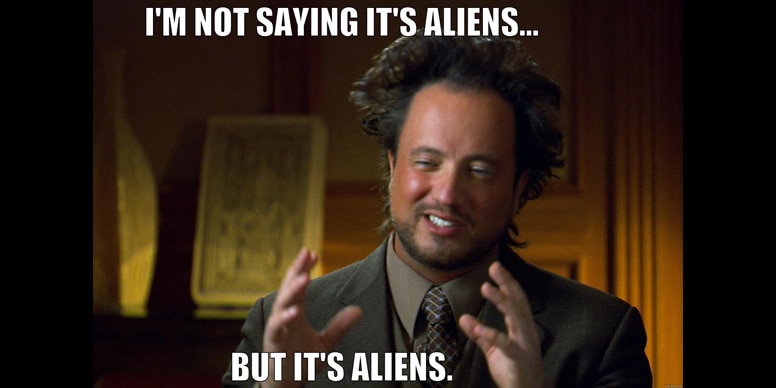Create a free profile to get unlimited access to exclusive videos, sweepstakes, and more!
I Still Still Don’t Think It’s Aliens, but Tabby’s Star Keeps Getting Weirder

Just when you think Tabby’s Star can’t get any weirder, it goes and does.
You know this star: It undergoes very odd dips in brightness that have defied explanation. The star, formally called KIC 8462852 (but nicknamed Tabby’s Star after Tabetha Boyajian, the astronomer who led the team investigating it), has been observed by the Kepler spacecraft for some time now. Kepler looks for dips in brightness in stars indicating the presence of a planet orbiting it; the planet blocks a tiny bit of star light, and that drop in brightness can be detected.
But Tabby’s Star isn’t behaving itself. Instead of a smooth dip and subsequent rise in brightness indicating a planet, it suffers nonperiodic, asymmetric, and very deep dips in brightness. This is not at all what you expect from a planet. Ideas including shattered asteroids and swarms of comets explain some but not all of the dips.
After a while people began to wonder: What if advanced aliens were building huge megastructures around the star, in order to capture its light to power their civilization? I know, that’s a bit far-fetched, but it actually fits the data pretty well. No scientist really thinks that’s the case—it’s a reach, and no signals from aliens have been found—but nothing else works, either. It’s baffling.
Then an announcement was made that over the past century or more the star has been fading at an unprecedented rate. This finding was immediately called into question, though, and the issue of fading remained unresolved.
But now a new study, using data from Kepler itself, shows that Tabby’s Star really is fading, and at quite a clip: Over three years of observation it faded by nearly 1 percent, then took a sudden nosedive, fading by two percent in the next 200 days.
I know, that doesn’t sound like much, but remember this is an entire star, a mighty source of energy. Stars like this one just don’t do that! What’s causing it?
The astronomers first looked at the data to make sure the fading was real, and after careful investigation concluded it is. It’s not some instrumental effect from Kepler itself, but instead is something happening on, at, or near the star.
They looked for other factors, like stars around it changing brightness, but don’t see anything amiss that might throw off the data. They looked at quite a few stars around Tabby’s, and only saw a handful that exhibit similar fading, but none with that sudden 2 percent drop.
Whatever that star is doing, it’s actually doing it.
So what could it be? It’s not a planet; it would have to be far larger (0.15 times the size of the star itself!) than any planet could be to make such a large dip, and the slow change would mean it was implausibly far from the star. A cloud of material might do the trick, slowly passing in front of the star and blocking its light, but that doesn’t explain the sharp dips, either.
The researchers find that a recent collision of asteroids or comets might account for almost everything seen; the big dips would be from clouds of material, and the smaller rapid dips from more solid bodies. But that doesn’t explain the centurylong dip, or the fading seen by Kepler (I’ll note the recent fading is consistent broadly with the much longer fading, but doesn’t necessarily prove it’s real).
Nothing explains everything we see. It’s a mystery.
Clearly, more observations are needed. A cloud of dust could redden the star, in much the same way that atmospheric haze on Earth makes the setting Sun look redder, so a change in the star’s color would be interesting. The astronomers also suggest looking for planets farther out from the star, perhaps a few hundred million kilometers from it. The gravity from a planet like that could, in theory, gravitationally align a disk of material around the star (think of it as a thick, dusty asteroid belt) that could explain some of the features.
Could that be what’s doing all this? Maaaaaaybe. There are still a few ideas tossed around that can explain Tabby’s Star’s behavior, but all are maddeningly, tantalizingly difficult to ascertain.
Mind you, I’m still not saying aliens. I really and quite seriously don’t think that’s it. It’s more likely we’re seeing a combination of effects doing this; a cloud of material sliding in front of the star, dimming it slowly, with thicker clumps causing the sharper fading. But even that doesn’t explain all the data.
The only thing we know for sure is that we haven’t ever seen anything like this before, and that we are seeing is really, really weird.
And weird is good! Scientists love mysteries, especially the distinctly odd ones. This is tremendously fun science, with more questions than answers. But with more observations and more clever analyses, I hope that will reverse. Even if it’s not a technologically advanced civilization, I want to know what is going on!




























